Honoring the Hahnemann Community
The bankruptcy and closure of Hahnemann University Hospital over last summer marked an abrupt end to part of a 171-year legacy, known for path-making medical firsts in the fields of homeopathy, anatomy and cardiology, as well as progressive medical education and exceptional care of its patients.
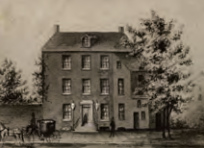
View Hahnemann University Hospital Timeline
Those significant aspects of Hahnemann's distinguished history inspired The Drexel Collection's exhibition Honoring the Hahnemann Community, which opened in November at the Paul Peck Alumni Center in University City and moved to the Center City Campus in January. It was scheduled to travel to the Queen Lane Campus this spring, but the campuses were closed because of COVID-19.
The curators documented the history of the institution through an extensive timeline, historical objects and a wide array of archival photographs from the Legacy Center Archives at the College of Medicine. And in honoring the hospital, as the name suggests, the exhibition honored the faculty, staff, students, alumni and community that supported and benefited from the institution for generations.
Where It Started
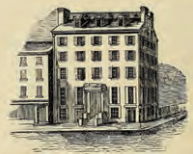
The Hahnemann University Hospital that closed in 2019 had a different name, location and medical focus from its genesis 172 years ago. Its roots can be traced to the Homeopathic Medical College of Pennsylvania, founded in 1848 to teach a new medical system known as homeopathy, which is based on the belief that a disease can be cured by a substance that causes similar symptoms in healthy people. The college also operated a free clinic for the poor to provide clinical opportunities for its students.
Created by German physician Samuel Hahnemann, homeopathy was very popular in the 19th century, and the college, which later became Hahnemann Medical College of Philadelphia, was the first enduring institution to teach it.
A homeopathic hospital opened in 1852 but closed two years later. A similarly short-lived hospital opened behind the college for the purpose of treating soldiers wounded in the Civil War. Finally, in 1871, a new five-story hospital, the Homeopathic Hospital of Philadelphia, opened on Cuthbert Street. However, early tensions between the college and the hospital over their missions persisted for nearly a decade. The hospital corporation wanted to be independent of the college, while the faculty wanted to erect an amphitheater in the hospital for clinical instruction.
Eventually, work began on a 150-bed hospital at 15th and Vine Streets, which opened in 1890, and a new education building went up at 222 North Broad. The institutions were united under the corporate name Hahnemann Medical College and Hospital of Philadelphia. But this was not the last move of either the hospital or the educational programs. In fact, they switched places in the late 1920s. Education moved into the 1890 hospital building, and the education building gave way to a state-of-the-art hospital. The new Hahnemann was much admired as the first "skyscraper" teaching hospital.
A Change in Curriculum
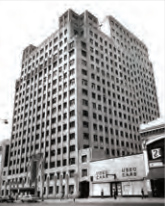
Nearing the middle of the 20th century, the field of homeopathy was in decline, and Hahnemann — which had long taught allopathic medicine as well — rearranged its curriculum, no longer requiring homeopathy courses and removing them entirely in 1959.
By that time, Hahnemann had already started reinventing itself as a nationally known academic medical center, with prominence in cardiac surgery, cardiology and oncology. It would go on to become a leader in organ transplantation and the training of physicians and other health professionals. Throughout its complex history, Hahnemann was well known for innovation and was home to significant medical firsts in the region, the country and the world.
This commitment to excellence and developing new medical techniques and fields lasted until the end: In 2017, Hahnemann became the country's second academic medical center to offer a transgender surgery fellowship program, and in 2019 Hahnemann's kidney transplant program ranked in the top 10 nationally and was Pennsylvania's only 5-star program.
Patients First
As a safety-net hospital, Hahnemann provided affordable care to Philadelphia's uninsured, undocumented and vulnerable residents, as well as those living in the neighborhoods north of City Hall. With its Level 1 trauma center, Hahnemann's emergency department was the first destination for any casualties of the many festivals and events on the Benjamin Franklin Parkway.
The hospital also had its fair share of notable patients: Actress and future Princess of Monaco Grace Kelly was born at Hahnemann in 1929; Vanguard founder John Bogle received a transplanted heart at Hahnemann in 1996, living for 22 more years; and former President Gerald Ford was treated there for a stroke and infected tongue while attending the Republican National Convention in 2000.
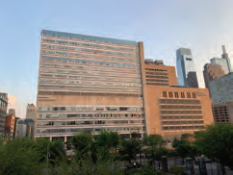
In 1998, the hospital and the medical school became independent institutions once again after the for-profit Tenet Healthcare purchased the hospital. The school had earlier been merged with the Medical College of Pennsylvania as MCP Hahnemann School of Medicine (see timeline). Drexel University took on managing, and then acquired, the not-for-profit medical school, and in 2002, Hahnemann University Hospital and Drexel University College of Medicine signed a 20-year academic affiliation agreement. More than 500 residents and fellows and about a third of Drexel medical students received clinical training at the 496-bed teaching hospital. But in 2018, Tenet sold the hospital to American Academic Health System, and within 18 months, American Academic announced it would file for bankruptcy and close the hospital.
What Endures
From opening to closing, through new names and locations, and over the decline of homeopathic treatment and the rise of groundbreaking procedures, Hahnemann University Hospital maintained its forwardthinking reputation as a medical leader. It provided care to its community, training to students and graduate physicians, and opportunities for its staff to offer the finest treatment available.
That's exactly the kind of legacy we pay tribute to.
Hahnemann University Hospital Timeline

1800
1848
- The Homeopathic Medical College of Pennsylvania opens in a leased building at 229 Arch Street
- Students receive clinical instruction at a dispensary that treats the poor
1850
- Female Medical College of Pennsylvania is founded
- The school is later renamed Woman's Medical College

1852
- Homeopathic Hospital of Pennsylvania opens at 24th and Chestnut Streets but closes two years later
1862
- A women's association opens a hospital in the rear of the college building to treat wounded soldiers
- It closes after the war
1867
- Following a rift, a group of physicians leaves to open a second school, the Hahnemann Medical College of Philadelphia
1869
- Faculty members bring the rival schools together
- The two colleges merge under the name Hahnemann Medical College
- A fair is organized to celebrate the merger and raise funds for a homeopathic hospital
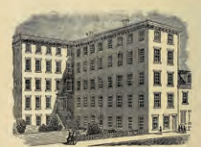
1871
- Homeopathic Hospital of Philadelphia opens in January
1882
- Land (1.8 acres) is purchased on Broad Street between Race and Vine for the medical school
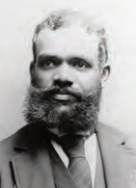
1884
- Thomas Creigh Imes becomes the first African American to graduate from Hahnemann
- Work on a new hospital and college begins
1885
- Homeopathic Hospital of Pennsylvania at Philadelphia (first chartered in 1852) merges with Hahnemann Medical College of Philadelphia
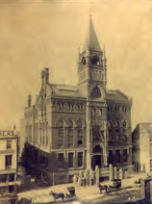
1886
- Hahnemann Medical College completes a new education building on North Broad Street

1888
- Rufus B. Weaver, MD, professor of anatomy at Hahnemann Medical College, finishes the first dissection of the complete nervous system. It wins a gold medal at the Chicago World's Fair in 1893
1889
- Following the Johnstown flood, Hahnemann establishes a free homeopathic dispensary in Johnstown for survivors, treating 2,350 patients in a six-month period
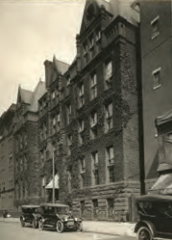
1890
- Hahnemann completes a 150-bed hospital at 15th & Vine Streets
- The corporate name "Hahnemann Medical College and Hospital of Philadelphia" is adopted
- The Hahnemann Hospital Training School for Nurses is launched
1891
- Drexel University is founded by financier Anthony J. Drexel
1910
- Similia, the yearbook of Hahnemann Medical College, includes fraternities and athletics. The yearbook name varies over the years before finally becoming The Medic.
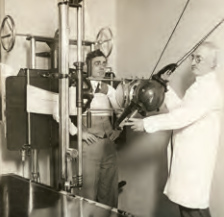
1921
- Hahnemann opens America's first school of X-ray technology
1927
- The Hahnemann College building at 222 North Broad Street is razed
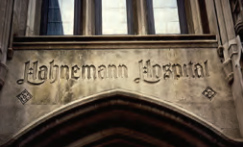
1928
- Hahnemann Hospital opens at 230 North Broad Street. It is the first "skyscraper" teaching hospital in the United States.
- The medical school moves into the 1890 hospital building on 15th Street
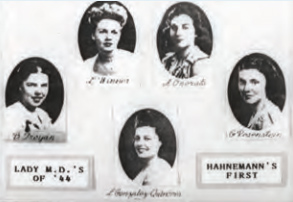
1941
- Hahnemann Medical College admits female medical students
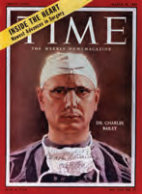
1948
- Chief of Thoracic Surgery Charles Philamore Bailey, MD '32, performs the world's first successful closed-heart valvular surgery. In 1957, he appears on the cover of Time magazine.
1959
- The last teacher of homeopathy retires

1963
- Hahnemann doctors perform the region's first kidney transplant
1967
- Hahnemann starts the world's first graduate-level art therapy education program
- The Myer Feinstein Polyclinic at 216 North Broad Street and the Elmer Holmes Bobst Clinical Research Building open
- A graduate school is established
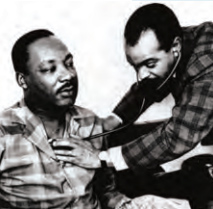
1968
- Walter Lomax, MD '57, treats Dr. Martin Luther King Jr. for a viral infection when he comes to Philadelphia to open a field office for the Poor People's Campaign
1970
- Hahnemann launches Pennsylvania's first outpatient dialysis unit
- Woman's Medical College becomes Medical College of Pennsylvania
1971
- Wilbur W. Oaks, MD '55, and David A. Major, MD '64, establish the Physician Assistant program at Hahnemann Medical College and Hospital, one of the first in the country
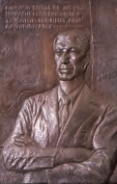
1972
- Hahnemann University Graduate School is formally organized under its first dean, microbiologist Amedeo Bondi, PhD
1974
- New College Building is dedicated
1975
- The nursing diploma school is converted to undergraduate degree programs
1976
- Hahnemann doctors perform the region's first allogeneic bone marrow transplant
- Hahnemann Medical College introduces a master's degree in family therapy
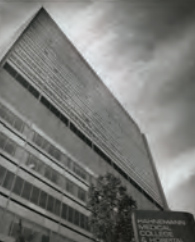
1979
- The hospital's North Tower opens at Broad and Vine
1982
- Hahnemann Medical College becomes Hahnemann University
1986
- Hahnemann opens the city's first adult Level 1 Trauma Center
- Hahnemann forms University MedEvac with Lehigh Valley Hospital Center, where Michael Rhodes, MD ‘70, is chief of trauma

1988
- Allegheny Health, Education and Research Foundation, based in Pittsburgh, acquires MCP and its hospital
1993
- AHERF acquires Hahnemann University and its hospital
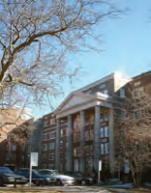
1994
- The medical schools are merged as MCP Hahnemann School of Medicine. The first class under that name enters in 1995.
1996
- The institution is renamed MCP HU Medical School of Allegheny University of the Health Sciences. Diplomas continue to be issued by MCP or Hahnemann.
- Allegheny establishes the School of Public Health.
1998
- AHERF, which now owns eight Philadelphia hospitals, including MCP, Hahnemann and St. Christopher's Hospital for Children, files for bankruptcy
- Tenet Healthcare, buys the hospitals
- MCP Hahnemann University is created to preserve the health sciences schools
- Drexel University agrees to manage the new academic entity
2002
- The Drexel board votes unanimously to make MCPHU School of Medicine a subsidiary of Drexel University, creating the Drexel University College of Medicine
- Hahnemann University Hospital and the College sign an academic affiliation agreement
2008
- Among many joint initiatives, Hahnemann, the College of Medicine and Drexel's School of Public Health collaborate in Healing Hurt People, a violence-intervention program that is a national model
2017
- Hahnemann is the country's second academic medical center to offer a transgender surgery fellowship program
2018
- American Academic Health System LLC purchases Hahnemann and St. Christopher's from Tenet

2019
- Hahnemann University Hospital files for bankruptcy in U.S. Bankruptcy Court on June 30
- The hospital discharges its last inpatient on July 26
- Hahnemann closes its emergency department on August 16
Back to Top